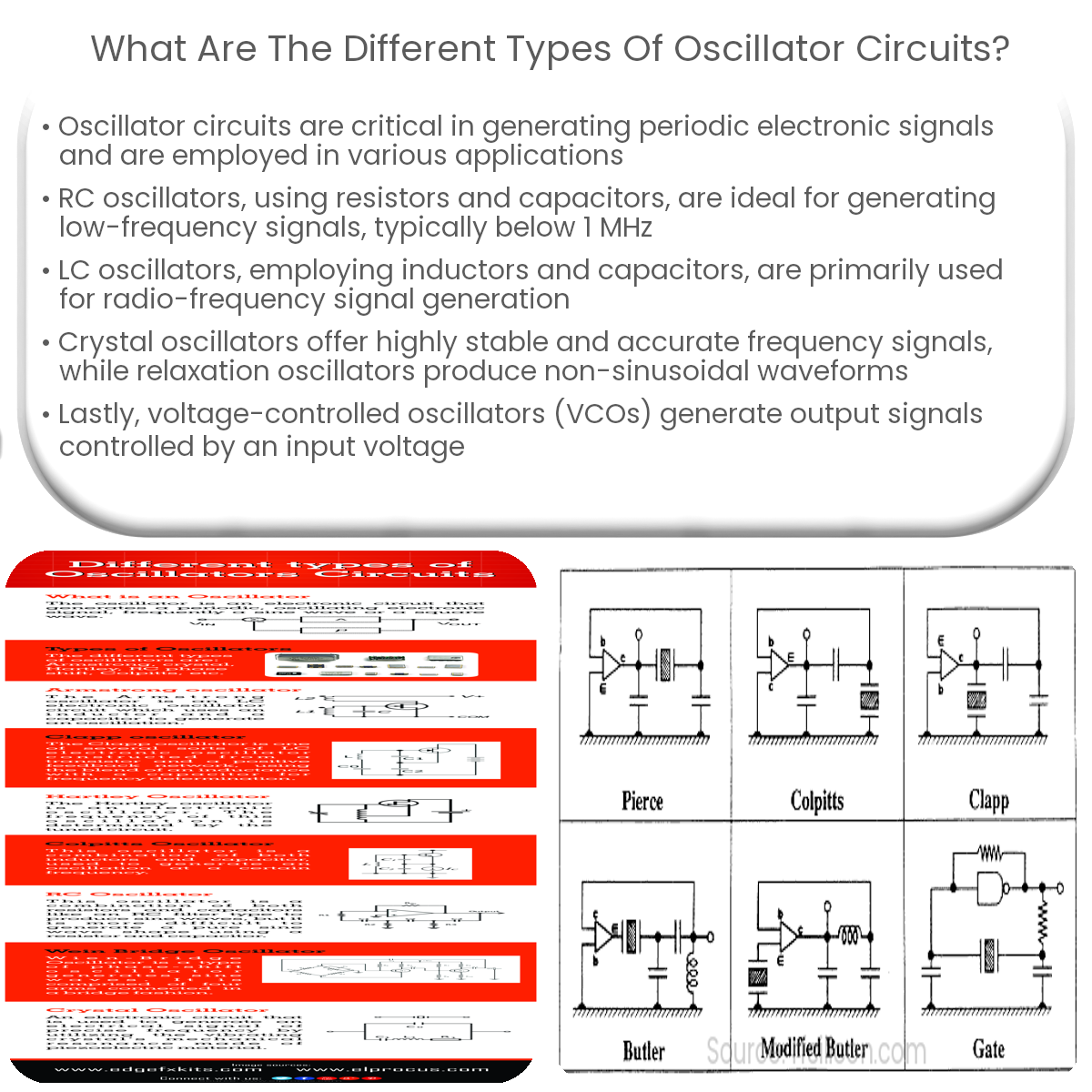Different oscillator types include RC oscillators, LC oscillators, crystal oscillators, relaxation oscillators, and voltage-controlled oscillators.
Types of Oscillator Circuits
Oscillator circuits are essential in generating periodic electronic signals like sine waves, square waves, or triangular waves. They are used in various applications, such as communication systems, audio and video devices, and signal processing. This article discusses some common types of oscillator circuits:
RC oscillators use resistors and capacitors as frequency-determining components. Some popular RC oscillators include:
RC oscillators are suitable for generating low-frequency signals, usually below 1 MHz.
LC oscillators use inductors and capacitors for frequency determination. Some well-known LC oscillators are:
LC oscillators are primarily used for radio-frequency signal generation, ranging from a few kHz up to several hundred MHz.
Crystal oscillators utilize the piezoelectric properties of quartz crystals to generate highly stable and accurate frequency signals. They are widely used in applications requiring precise frequency control, such as microcontrollers, clocks, and communication systems.
Relaxation oscillators produce non-sinusoidal waveforms, such as sawtooth, triangular, or square waves. They generally employ RC or other passive components to control the frequency and waveform shape. Some examples of relaxation oscillators are:
VCOs generate an oscillating output signal whose frequency is controlled by an input voltage. They are commonly used in synthesizers, frequency modulators, and phase-locked loop (PLL) circuits.
In summary, oscillator circuits are a critical part of modern electronic systems. The choice of the appropriate oscillator type depends on the desired frequency range, stability, and application requirements.


